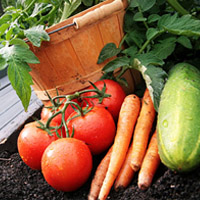10 Game-Changing Gardening Tips
Essential Gardening Tips for Beginners: Grow Your Green Thumb
Are you ready to transform your outdoor space into a thriving garden oasis?
Whether you’re a novice or looking to refine your skills, these essential gardening tips will help you cultivate a beautiful and bountiful garden.
From soil preparation to plant selection, we’ve covered you with expert advice to ensure your gardening success. 
1. Know Your Soil
Healthy soil is the foundation of any great garden. Before you start planting, test your soil’s pH and nutrient levels. Most plants thrive in slightly acidic to neutral soil (pH 6.0 to 7.0). Adjust your soil as needed with lime to increase pH or sulfur to decrease it.
2. Choose the Right Plants
Select plants well-suited to your climate, soil type, and available sunlight.
Native plants are often easier to grow and maintain, as they’re adapted to local conditions.
3. Plan Your Layout
Design your garden with both aesthetics and functionality in mind.
Group plants with similar water and sunlight needs together, and consider the mature size of each plant to avoid overcrowding. Divide your garden into distinct areas based on use and plant types:
- Vegetable garden: Place this in a sunny spot with good soil drainage.
- Herb garden: Often placed near the kitchen for easy access.
- Flower beds: These can be used to create borders or focal points.
- Seating or relaxation area: Consider privacy and views when placing this zone.
- Compost area: This should be easily accessible but out of sight.
- Storage area: This is for keeping tools and equipment.
4. Water Wisely
Proper watering is crucial for plant health. Water deeply and less frequently to encourage deep root growth. Consider installing a drip irrigation system for efficient watering.
5. Mulch Matters
Apply a 2-3 inch layer of organic mulch around your plants to retain moisture, suppress weeds, and regulate soil temperature.
6. Fertilize Thoughtfully
Use organic fertilizers to nourish your plants without harming beneficial soil microorganisms. Follow package instructions to avoid over-fertilizing.
7. Practice Companion Planting
Some plants grow better together. For example, planting basil near tomatoes can improve their flavor and repel pests.
8. Monitor for Pests and Diseases
Regularly inspect your plants for signs of pests or diseases. When possible, address issues promptly using organic pest control methods.
9. Prune and Deadhead
Regular pruning and deadheading (removing spent flowers) promote healthy growth and continuous blooming in many plants.
10. Keep a Garden Journal
Record your gardening activities, successes, and challenges. This information will be invaluable for improving your garden year after year.
Essential Gardening Tools
Here’s a table of must-have gardening tools for beginners:Tool Purpose Hand trowel Digging small holes for planting Pruning shears Trimming and cutting plants Garden fork Turning and aerating soil Watering can Precise watering of plants Garden gloves Protecting hands while working Rake Clearing debris and leveling soil Hoe Weeding and creating furrows Wheelbarrow Transporting plants and materials
By following these tips and equipping yourself with the right tools, you’ll be well on your way to creating a thriving garden. Remember, gardening is a journey of continuous learning and discovery. Embrace the process, learn from your experiences, and watch your garden grow!




